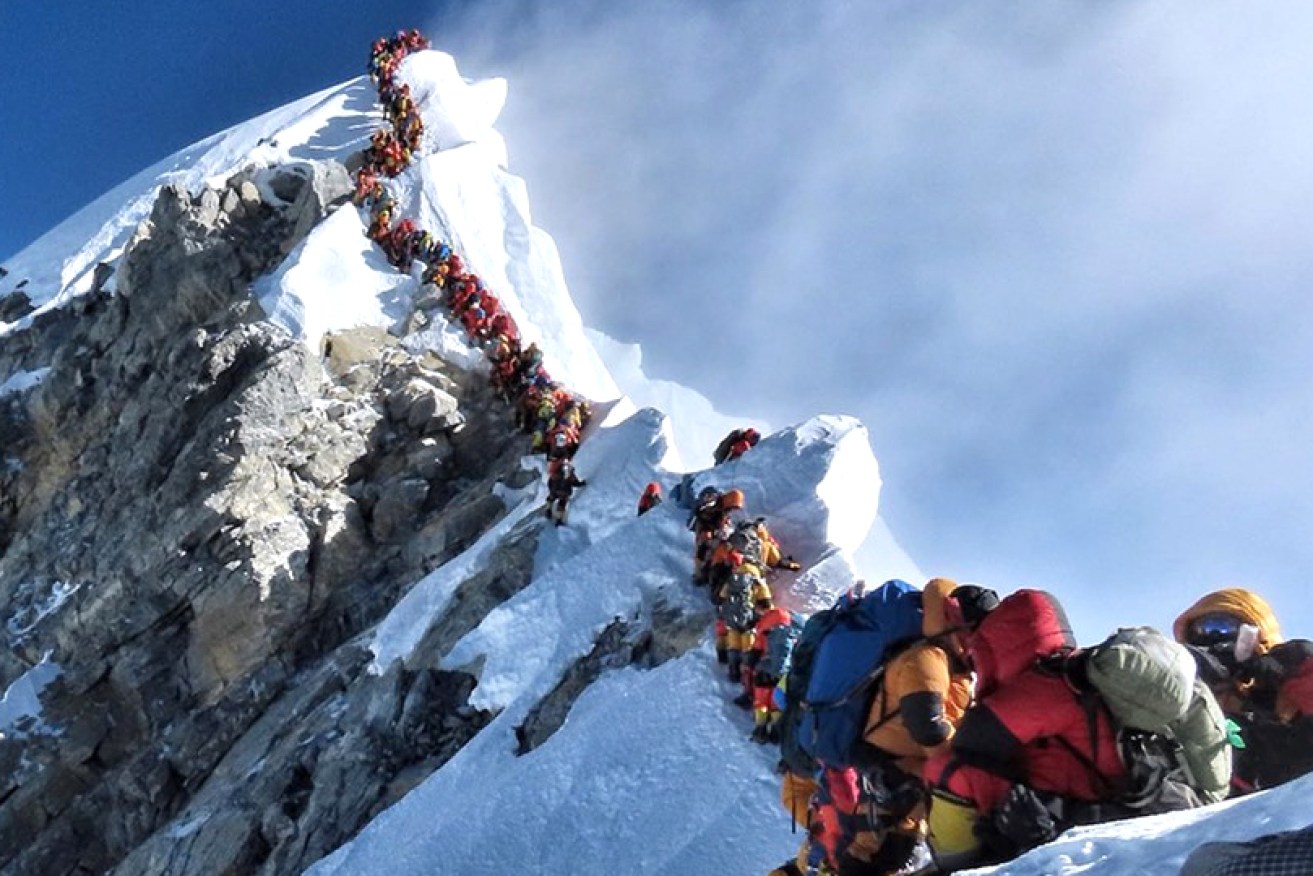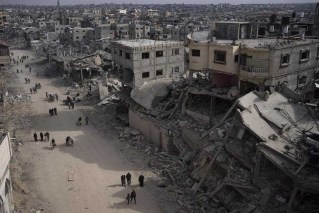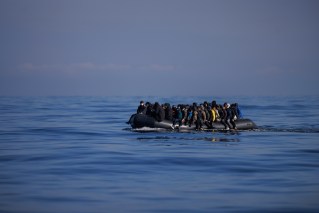On Everest, traffic isn’t just inconvenient. It can be deadly

This photo showing a queue waiting to reach the summit of Everest on Wednesday has shocked the world. Photo: Project Possible/Nirmal Purja Photo: Project Possible/Nirmal Purja
The reward for climbers who ascend Mount Everest is a view like none other, an expansive vista of the Himalayas from the highest point on the planet.
On Wednesday, those who made it to the top saw something else: Hundreds of other climbers.
The final leg of their journey to the summit was a traffic jam of trekkers enticed by good weather, the route clogged by a single-file march of 250 to 300 people along a precarious cliff that caused delays of about three hours.
Nirmal Purja, who photographed the scene, was among the climbers who scaled the peak on Wednesday, despite what he described as “heavy traffic.”
The long, winding line to the peak added another element of risk to what is already one of the most dangerous mountains, raising the possibility of frostbite and oxygen depletion. At least two climbers died after having reached the summit Wednesday, and their deaths may have been related to the delays.
Donald Cash, 54, an American, died after collapsing on the mountain following an unusually long summit, according to Pioneer Adventures, a Kathmandu-based organisation that leads expeditions on Everest.
Mr Cash was traveling with sherpa guides from Pioneer Adventures, the organisation said, and fainted from altitude sickness. He could not be revived by the sherpas.
The other fatality, Anjali Kulkarni, 54, an Indian, collapsed while returning from the summit with her husband, according to Arun Treks and Expedition, which led the trip.
“Due to the huge traffic yesterday and the delay in being able to return back, she couldn’t maintain her energy,” said Phupden Sherpa, the tour group’s manager.
Mr Sherpa, who recalled similar episodes in 2017 that resulted in climber deaths, said it took the group an additional three hours to return to camp, a wait that he believes contributed to Ms Kulkarni’s death. Several of the climbers with Ms Kulkarni returned to their camp with frostbite and other injuries.
Nivesh Karki, the manager of Pioneer Adventures, attributed the congestion at the summit to good weather. The frequently changing conditions mean that there is often only a small window of time for climbing, so on Wednesday, more groups than usual chose to push ahead rather than wait and risk harsh weather.
“It was such clear day, so everyone was rushing to the summit,” he said. “Once the weather is bad, no one can summit so in good weather, everyone will try to go for the summit.”
Mr Karki said the crowding on the mountain increased the peril for all climbers, even under normal circumstances. Two climbers are believed to have died on Everest last week: An Indian man was found dead in his tent and an Irishman went missing after a fall.
“This is a huge problem because the route is already dangerous, and there is always risk,” he said. “A lot of traffic makes the journey quite difficult.”
But despite the risks, Everest has grown increasingly crowded. In 2018, a record number of climbers made it to the summit, according to figures from Alan Arnette, who chronicles the journeys of climbers on the mountain on his blog.
The Nepal Ministry of Tourism reported 563 people – a combination of foreigners and local guides – summited Everest from Nepal, and Mr Arnette estimates that an additional 239 people reached the summit from Tibet, bringing the total to 802 people in 2018. There were five deaths on Everest in the climbing season last year. This year is expected to be even busier.
In addition to slowing down the climb to the summit, the large crowds have also resulted in a growing rubbish problem. While climbers must register for a permit to scale the mountain, there is no quota system, so the crowds continue to grow.
-New York Times








